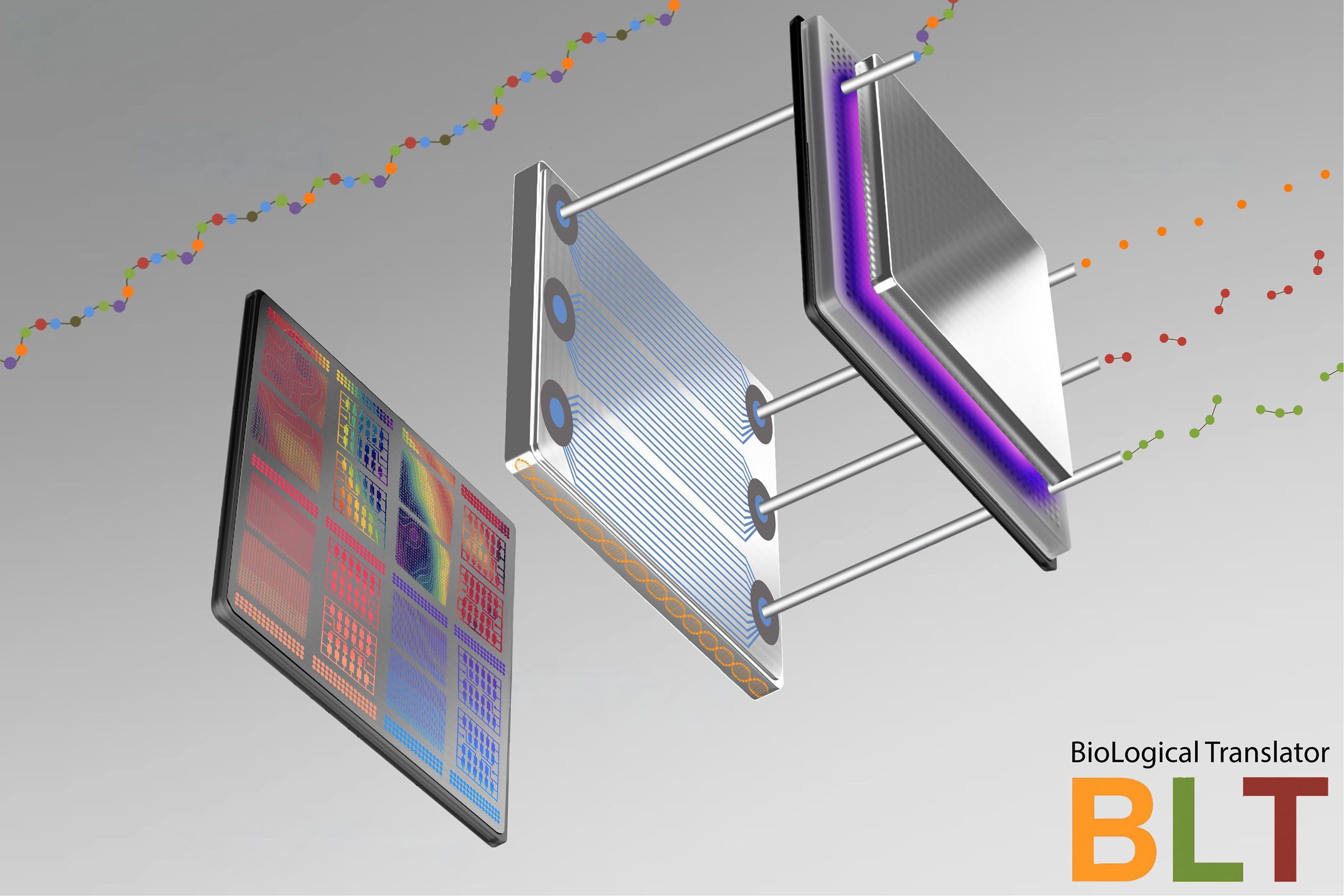Purdue awarded $8M from DARPA to develop healthcare microsystem that provides more accessible and affordable treatments

A multidisciplinary Purdue University team will receive $8.8 million over three years from the Defense Advanced Research Projects Agency (DARPA) for its Microsystem Induced Catalysis (MICA) program.
Advances in microsystems, biochemistry and molecular biology have driven transformative innovations across fields, but combining these disciplines to enable precise and scalable interactions between molecules and microsystems has remained a significant challenge. MICA’s mission is to bring together molecular and microsystem engineering in ways that previously were unfeasible, paving the way for new breakthroughs in material synthesis, medical therapies and biothreat detection.
The Purdue project, BioLogical Translator (BLT), is an innovative technology that bridges the gap between traditional electronic computing and biological systems. It translates electrical signals and computational power into biological outputs with embedded logic or intelligence.
“The name ‘BLT’ is a playful nod to the classic bacon, lettuce and tomato sandwich, reflecting a simple yet powerful three-component design,” said PI Leopold Green, assistant professor in the Weldon School of Biomedical Engineering. “The ‘lettuce’ layer consists of microsystem chips that provide computational power to ‘crunch’ multiple inputs. The ‘tomato’ layer uses enzyme catalysis to produce ‘sweet’ beneficial pharmaceuticals. Finally, the savory ‘bacon’ layer, made of DNA, holds the system together.”

This transformative platform enables applications like on-demand drug production, merging the precision of electronics with the adaptability of biology. The two-phase project will harness Purdue’s strengths in biological catalysis, synthetic biology and semiconductor technology — one of the fastest growing industries in the world.
BLT integrates semiconductor components with biological systems, which are in dire need of reliable, scalable and high-throughput solutions, Green said.
“This modular technology has the potential to revolutionize healthcare by making treatments more accessible, affordable and responsive to individual needs,” Green said.
Ultimately, BLT aims to create a new class of computing materials that seamlessly connect the digital and biological worlds, benefitting public health and advancing medical innovation.
Co-PIs are professor Dana Weinstein and Ashraf Alam, Jai N. Gupta Distinguished Professor, both in the Elmore Family School of Electrical and Computer Engineering; distinguished professor Michael Ladisch, assistant professor Karthik Sankaranarayanan and research assistant professor Fernanda Da Cunha in Agricultural and Biological Engineering; and Chengde Mao, professor in the James Tarpo Jr. and Margaret Tarpo Department of Chemistry.
This project marks a flagship collaboration between the Colleges of Agriculture, Engineering and Science, bringing together world-class experts: Weinstein and Alam in microsystem technologies Mao in nucleic acid engineering and Ladisch in bioprocessing — in addition to the talents of assistant professors Sankar, Da Cunha, and Green.

DARPA’s substantial investment empowers the team to address longstanding challenges in integrating carbon-based biological systems with silicon-based electronics, a critical barrier to scalable biocomputing solutions.
This work aligns with Purdue’s One Health Initiative, which involves research at the intersection of human, animal and plant health and well-being, and is supported by the Birck Nanotechnology Center. It also addresses Indiana’s microsystems and synthetic biology focus, as outlined in the National Biotechnology Initiative Act of 2025. This act emphasizes a whole-of-government approach to advance biotechnology for economic productivity and national competitiveness.
“The funding ensures we can pioneer technologies that safeguard U.S. dominance in these strategic areas, fostering economic growth and protecting national interests in an era of global competition,” Green said.
BLT directly contributes to state-driven goals of ensuring scalable and reliable solutions for critical sections, Green said. On a national level, the project aligns with U.S. national security measures to maintain leadership in semiconductors, human health and agriculture, as highlighted by the National Security Commission on Emerging Biotechnology.
“BLT’s convergence of semiconductor technologies with biological systems addresses the urgent need to stay ahead of global competitors in the biotechnology race. By enabling on-demand pharmaceutical production, our technology strengthens supply chain resilience, enhances health security through accessible therapeutics and supports agricultural innovation by leveraging biological processes for sustainable solutions,” Green said.
The breakthrough technology of BLT will pave the way for a new era of personalized medicine and scalable bioprocessing solutions, Green said.
“If all goes well, we hope to develop a microsystem that can produce a single dose of a drug at the push of a button,” Green said.

